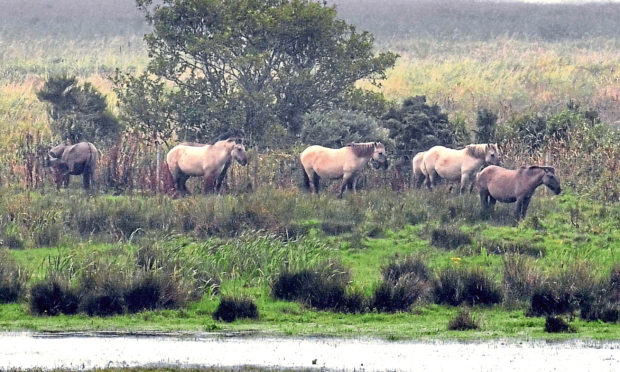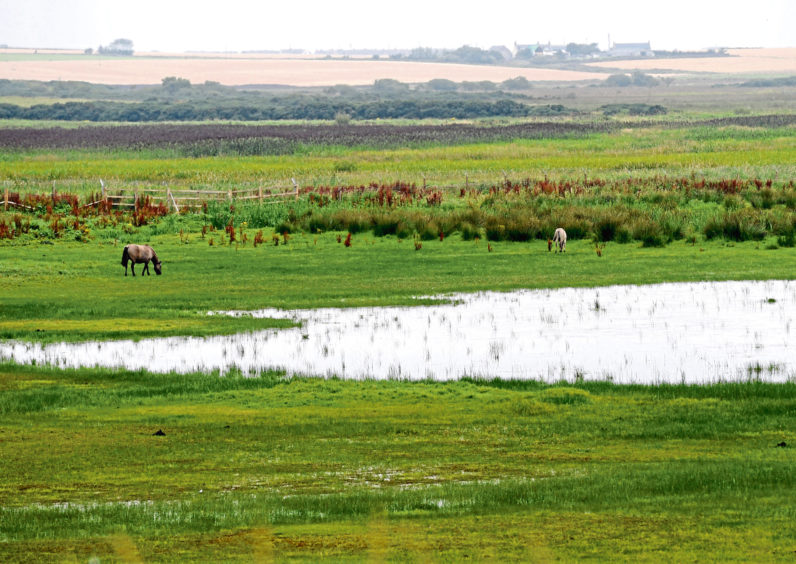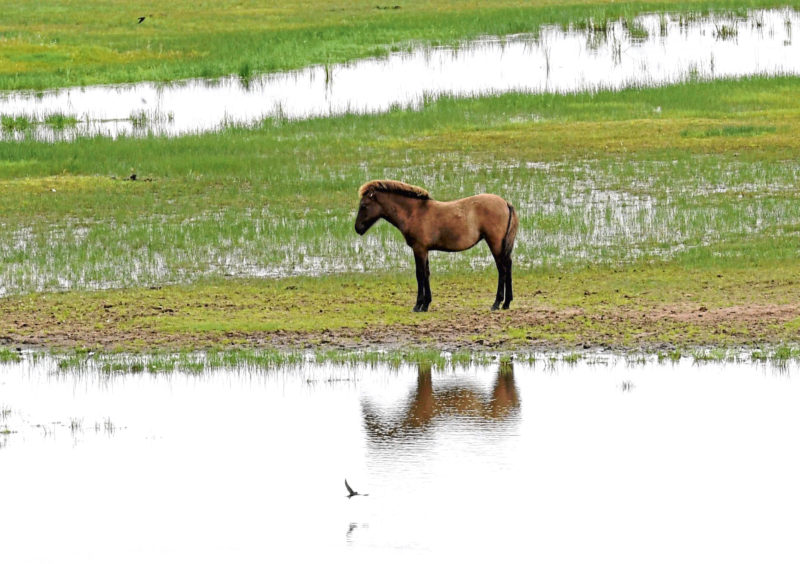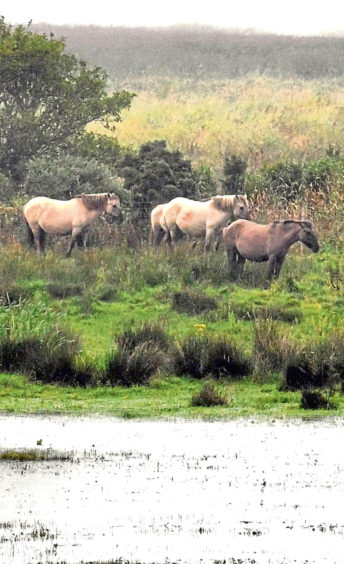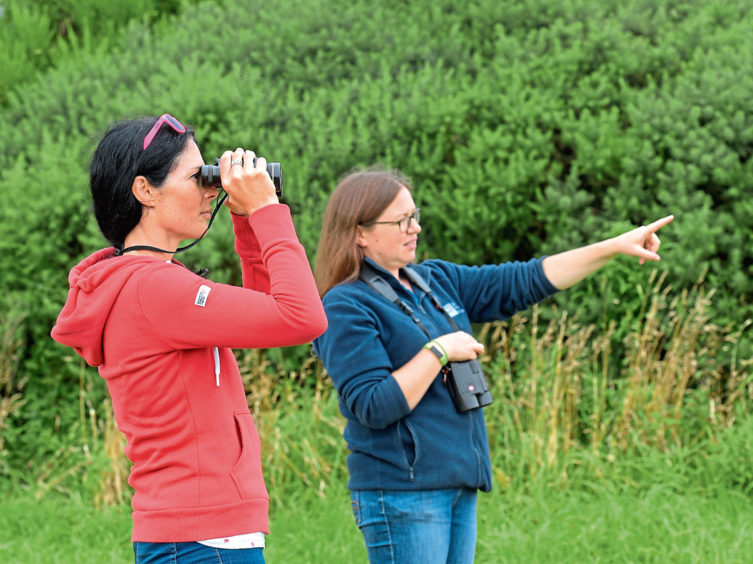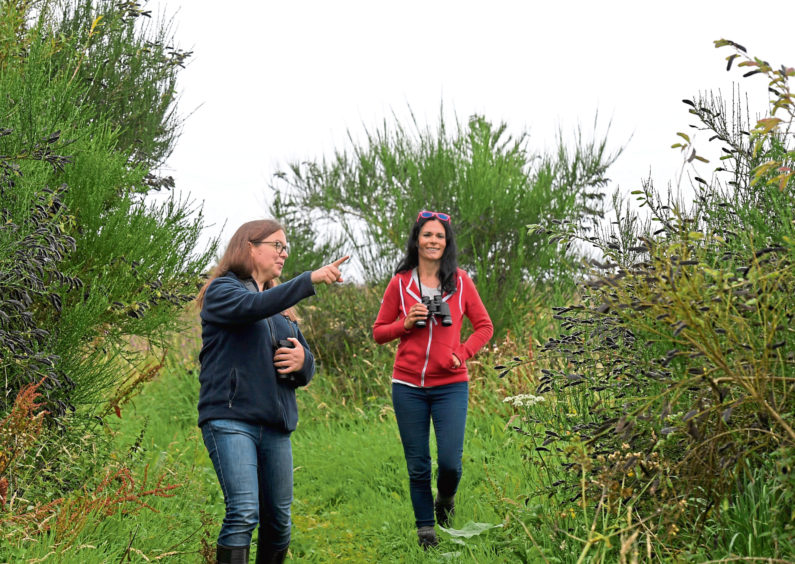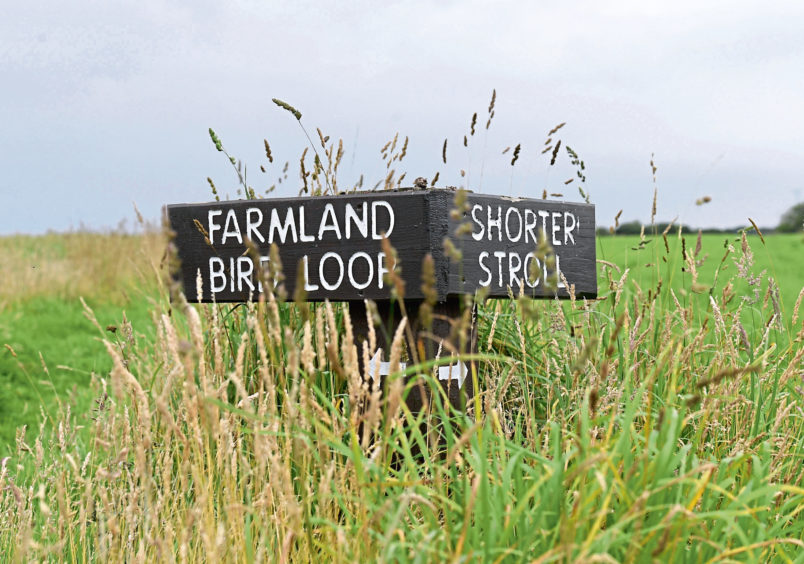A herd of rare wild ponies which roams Loch of Strathbeg nature reserve near Fraserburgh is helping other species to survive and thrive. Gayle finds out more.
As a lover of all things equine, I was hugely excited to be heading to the RSPB’s Loch of Strathbeg nature reserve.
A herd of rare wild ponies free-roams the vast site, and I was desperate to see the primitive Polish breed with my own eyes.
Alas, you can’t get up close and personal with them – stroking, cuddling and hand-feeding them is an absolute no-no.
The point is, they ramble and meander with as little human intervention as possible.
It’s enough to watch them in the distance – chilling out in the weak winter sun, grazing, wandering through the marshes and grooming each other.
The first group of eight Koniks arrived at the Aberdeenshire reserve in 2011.
There are 46 now, with some bred here and others bought in to keep the herd genetics healthy.
Their job is to help revitalise the reserve, which had become dominated by soft rush, a coarse, tussocky plant.
By grazing on this rank vegetation, the ponies help smaller, more delicate flowering plants to flourish, creating new habitats for birds and wildlife.
It’s great news for the geese, swans, ducks and wading birds like lapwings and curlew which need wetlands to feed and breed.
Lorna Dow, the warden at RSPB Loch of Strathbeg, is one of several people who look after the ponies.
“They’re hardy wee creatures,” she says.
“We’ve got two brilliant stallions on site to increase the number of foals so we can help another reserve – Inch Marshes near Kingussie – build a herd of Koniks.
“The word Konik means ‘little horse’ and they were bred to be as close to wild, ancient ponies as possible.”
While the ponies, which are fast growing their fluffy winter coats, are beautiful creatures, their feet are a different matter.
“They never get shod by a farrier,” says Lorna.
“Their hooves get a little bit longer than you might expect and naturally break off. They’re certainly not beautifully manicured.
“They get annual vet checks and regular condition and welfare checks and we normally get the young lads gelded (neutered).”
Anyone who wants a pony hug will be disappointed. These lads and lasses are semi-feral and are treated more like livestock than domestic horses.
“Some are friendly and some are not interested in people,” says Lorna.
“They’re not ‘broken’ or halter-trained. We like them to be as relaxed as possible with people so they’re not stressed when the vet comes, but we don’t want them to be super-friendly in case they come up and start pestering people for treats.
“They just don’t have the manners of some domestic horses so we like them to keep their distance and we don’t want anyone to get bitten.”
All the ponies have distinct personalities, but Lorna describes Pete, a gelded older lad, as a “grumpy old man”.
Once you’ve spotted the ponies (you might need binoculars if they’re really far away), you can stroll around the reserve at leisure and there’s plenty to see at this time of year.
A highlight is the 18th Century wind pump tower which dominates the landscape.
It’s an odd-shaped edifice and Lorna explains it’s a scheduled ancient monument which was once used to pump water out of the area into the loch.
“The story goes that a man working in it got his arm caught in it.
“Someone put in an iron bar to stop his arm getting further caught up and it’s never been used since.”
The north-east reserve is renowned for its migrating population of pink-footed geese. Each year thousands of the birds make a 500-mile trip from their Icelandic breeding grounds to the loch – a designated protection area. A count last month revealed there were around 1,500.
“That’s not as many as in previous years – we had 65,000 a few years ago,” says Lorna.
Other winter visitors include whooper swans, mute swans, ducks such as wigeon, teal, goldeneye and mallard, little egrets and tree sparrows.
As we head back to the visitor centre, Lorna lets out a squeal of excitement.
There, on top of a telegraph pole in the middle of the marshes, is an osprey. He’s simply hanging out there, looking for his next meal.
We watch him as he preens his feathers and casts a beady eye around for prey. Fantastic.
In essence, Strathbeg is well worth a visit no matter the weather or time of year. As Britain’s largest dune loch, it’s home to a huge variety of wetland wildlife.
For me, the ponies are the icing on the cake.
Info
Konik ponies are descended from the Tarpan horse which roamed Britain in prehistoric times.
In 2017, Brian Sandison, a member of Fraserburgh Photographic Society, captured the moment one of the Konik ponies gave birth at Loch of Strathbeg on camera.
Loch of Strathbeg was formed in 1720 by a huge storm which hit the area.
There are now almost 600 species of birds, mammals and insects on the reserve. The visitor centre is open, with Covid-related rules in place. rspb.org.uk
